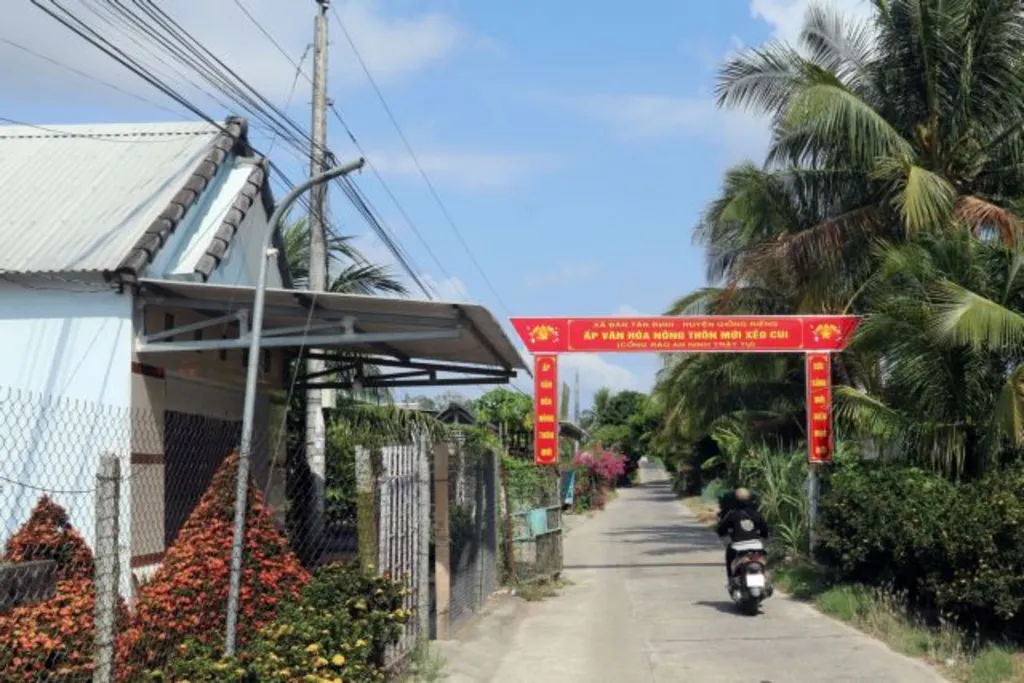 Society
Society

 |
| A Khmer pagoda in Kiên Giang Province’s Châu Thành District. The province has repaired and built many Khmer pagodas to improve the spiritual lives of Khmer people. — VNA/VNS Photo Lê Sen |
KIÊN GIANG — The lives of Khmer people in Kiên Giang Province have been improved significantly as the province has taken various measures to support them.
The province has 56,000 Khmer households with 237,000 people, accounting for 13 per cent of its population.
It ranks third in the Cửu Long (Mekong) Delta, after Sóc Trăng and Trà Vinh provinces, for having the largest number of Khmer people.
The province promotes production and businesses, and this helps many Khmer households have stable lives and become wealthy.
Thị Đào in Gò Quao District’s Thới Quản Commune now has an income of VNĐ1.8 - 2 billion (US$70,000 - 78,000) a year and has been honoured as a member with good production and a business in the commune’s women's union.
She and her husband had no property after they married, and she worked as a tailor and her husband was an iron door maker, she said.
Besides doing their jobs, they bred pigs to produce meat and piglets to increase income, she said.
In 2011, she bought a 1.2ha field to grow rice, began to offer table and chair rental services for weddings and other ceremonies, and sold food and beverages in front of her house, she said.
“My family has a good life now thanks to the support of the province’s women's unions at all levels, which have assisted me to access a soft loan of VNĐ50 million ($2,000) to expand production and business,” she said.
The province has more than 150,000 farmers, including 35,000 Khmers, who are honoured as farmers with good production and businesses each year.
It has 27 ethnic groups, and ethnic minority people account for 14.9 per cent of its population, with Khmer being its largest ethnic minority, according to the province’s Committee for Ethnic Minority Affairs.
It has taken many policies to invest in socio-economic development for ethnic people's living areas, and this has created stable livelihoods, production models adapting to climate change, houses and clean water for ethnic people.
Danh Phúc, head of the committee, said up to 42 of the province’s 49 communes where ethnic people live had been recognised as new-style rural communes.
The number of poor ethnic people had fallen to 2.4 per cent, he said.
In the living areas of Khmer people, their traditional festivals are preserved and organised well, according to the official. Their Ok Om Bok festival, also called the Festival of Worshipping the Moon, has been upgraded to become a provincial-level Culture, Sports and Tourism Festival Day.
Five Khmer pagodas have been recognised as having heritage and have been added in the province’s project of preservation and development.
The province has 43 schools which teach both Vietnamese and Khmer languages for 5,898 Khmer students.
It also has 41 Khmer pagodas which teach Khmer language to about 5,000 Khmer students during the summer vacation every year.
 |
| Caption: A well-maintained rural road in Kiên Giang Province’s Giồng Riềng District, home to a large number of ethnic Khmers. – VNA/VNS Photo Lê Sen |
It spends nearly VNĐ600 million ($23,000) a year to buy Khmer-Vietnamese bilingual textbooks for Khmer students and provides financial support for teachers and monks who teach Khmer to Khmer students during the summer vacation.
About 4,600 ethnic students in the province, mostly Khmers, receive vocational training at colleges and intermediate vocational schools every year.
The province has implemented mechanisms and policies to exempt school fees for Khmer students and has recruited a number of Khmer students to study at colleges and universities every year.
Phúc said the province targeted to increase the average income of ethnic people to VNĐ100 million ($3,900) next year, double that of 2020. — VNS